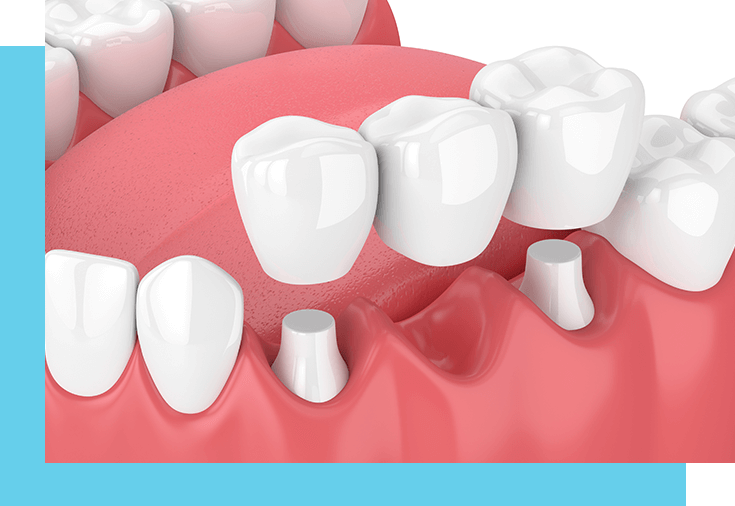The Basic Procedure for Dental Bridges
Step One: Initial Consultation
Your journey begins with an initial assessment and consultation with our dentists. During this
appointment, we thoroughly examine your teeth and gums to understand your unique dental
condition. Based on our assessment, we'll advise you on the best course of action for your
specific needs.
Step Two: Teeth Preparation and Temporary Bridge Placement
Once you've received the green light, we move on to the preparation phase. Our dentists will
carefully numb the area, remove any decay, and shape the adjacent teeth (abutment teeth) to
provide support for the dental bridge. We take impressions or scans of your teeth, sending them
to our lab to create the final prosthetics. The selection of dental crowns matching your natural
tooth color is a key consideration.
To protect the abutment teeth during the bridge fabrication process, we'll place a temporary
dental bridge. During this period, you'll receive specific hygiene and dietary guidelines to
ensure optimal care.
Step Three: Permanent Bridge Placement
Once your final prosthetic is ready, we'll schedule an appointment for the permanent bridge
placement. Our dentists will remove the temporary bridge, apply a topical anesthetic to minimize
discomfort, and carefully install the permanent dental bridge. Precise placement is crucial, and
we'll ask for your feedback on the appearance before permanently bonding the bridge using dental
cement. You may need to bite down to ensure the cement sets properly.
After the procedure, we'll clean any excess cement, polish the bridge, and invite you to take a
final look at your newly attached dental bridge.
Step Four: Follow-Up
Ensuring the success of your dental bridge is a priority for us. Post-treatment care and
follow-up appointments are essential. During these visits, we provide guidance on caring for
your dental bridge and offer recommendations for oral care products. Our goal is to empower you
with the knowledge needed to maintain a healthy and beautiful smile.
There are some slight differences in the process of each type of dental bridge. Here are the largest
distinctions.

